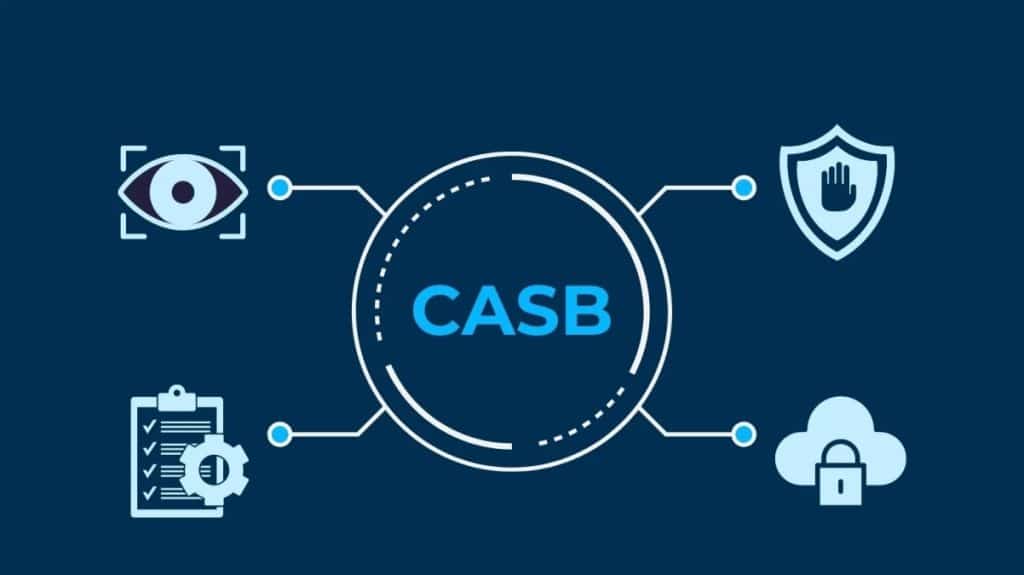With the shift to a hybrid work model, it’s becoming harder for IT teams to maintain visibility of all the data moving across their cloud environment. A CASB addresses this need by delivering security and management features like access control, DLP, encryption, etc. It also reveals unsanctioned software-as-a-service (SaaS) usage, or Shadow IT, so that IT can take action.
Adaptive Access Control
What is CASB in cyber security? CASB solutions enable organizations to take control of their cloud environment by identifying devices, applications, and users outside of the organization’s policies. CASBs also provide visibility into unauthorized activities, such as shadow IT, which can expose data to attack. They can prevent unauthorized file sharing and encrypt data at rest or in transit so it is unreadable even if intercepted by an attacker. They can also identify misconfigurations of SaaS platforms and remediate them to ensure security controls are appropriately implemented. CASBs can also detect data exfiltration attempts by malicious actors using stolen credentials and alert administrators to suspicious activity. They can also protect against attacks that exploit weaknesses in application programming interfaces (APIs) to intercept and steal data. CASBs can also provide a holistic view of the cloud environment, including the network and endpoints. A CASB solution should allow organizations to discover and scan all the resources in their infrastructure and classify them by risk. It should then provide administrators with visualization and insight into usage patterns to make informed decisions about resource allocation. In addition, it should support a variety of protections, such as encryption and malware prevention, including dynamic malware analysis and threat detection that can block unauthorized behavior before it takes hold.
Data Loss Prevention
CASBs protect against data loss by monitoring sensitive files moving to and from the cloud and encrypting data at rest or in transit. They also prevent unauthorized copying, corrupting, or deleting files and detect cyberattacks on cloud environments by observing suspicious activity and enforcing security policies. Enterprises rely on many cloud-based applications to support a remote workforce and enable collaboration. However, this shift to cloud infrastructure creates new risks for the organization, including unsecured file sharing, malicious insider threats, and theft of corporate information. While traditional DLP solutions cannot address these new risks because they cannot see or control how data is used within cloud-based applications, a CASB can. Sitting at the edge of a cloud environment, a CASB can inspect all traffic to and from an organization’s SaaS tools and identify and monitor sensitive data in use, transit, or at rest. In addition, a CASB can provide visibility into shadow IT and rogue apps and block malware that attempts to run in the cloud or move from the cloud to on-premises systems. A CASB can also detect and communicate risky access to an organization’s IT team, which is critical in defending against malicious or negligent insiders. This enables IT to understand the context of the risk better and work with end users to remediate security breaches that could lead to business disruption.
Malware Detection
Malware detection is an essential component of any CASB solution. By scanning every file uploaded, downloaded, and shared by cloud solutions, a CASB can identify malware before it can reach the organization’s environment or its users. This helps prevent attacks such as denial of service (DoS), where attackers exploit vulnerabilities in the virtual machine layer that manages and allocates resources to a hosted application. CASBs also detect and intercept data leakage from unmanaged devices such as IoT devices, personal laptops, and mobile apps. With increasing numbers of employees leveraging unsanctioned cloud services and applications to work remotely, businesses are often at risk for data breaches and other security threats. CASBs provide visibility into sanctioned and unsanctioned cloud usage and monitor compliance for enterprises that must adhere to strict regulations like HIPAA or PCI DSS. CASBs are deployed on-premises or in the cloud as software-as-a-service (SaaS) or infrastructure-as-a-service (IaaS). Understanding your organization’s use cases is essential when choosing the right solution. Evaluate the CASB vendor landscape and leverage media coverage and analyst reports to determine which vendors are best equipped to address your specific use case. Many CASB solutions offer a free trial to test their capabilities and see how they can help secure your business.
Threat Protection
As CASBs monitor user activity across cloud applications and devices, they build a baseline using user entity and behavior analysis (UEBA). Any deviation from the norm is then flagged, enabling administrators to identify and take action on threats like malware or ransomware. CASBs can also help detect and block attackers by detecting stolen credentials, blocking unauthorized applications, encrypting data at rest or in transit, and protecting SaaS apps with a robust unified policy engine. As employees use multiple cloud applications and devices, a CASB provides a bird’s eye view into all activity. It can reveal shadow IT, such as if a salesperson installs a team collaboration app or an accounting worker uploads sensitive financial data to an external cloud drive. CASBs can identify these activities and provide an actionable report so that security teams can stop unauthorized actions and educate employees on proper cloud usage best practices. The exponential growth of multi-cloud activity has made it impossible for IT teams to manage granular user access control manually. CASBs can automate threat alerts and responses to deliver a more secure and agile user experience. They can also identify and protect PHI, PII, and PCI data in SaaS environments, enforcing DLP policies and ensuring compliance with industry regulations. They can detect and revoke stolen passwords, prevent data leaks, and automatically enforce multi-factor authentication.
